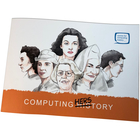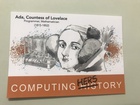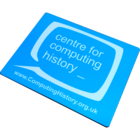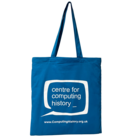Richard Stallman
|
Richard Stallman Richard Stallman (born March 16, 1953), often abbreviated "rms", is an American software freedom activist, hacker, and software developer. In September 1983, he launched the GNU Project to create a free Unix-like operating system, and has been the project's lead architect and organiser. With the launch of the GNU Project, he started the free software movement and, in October 1985, set up the Free Software Foundation.
Stallman pioneered the concept of copyleft and is the main author of several copyleft licenses including the GNU General Public License, the most widely used free software license. Since the mid-1990s, Stallman has spent most of his time advocating for free software, as well as campaigning against both software patents and what he sees as excessive extension of copyright laws. Stallman has also developed a number of pieces of widely used software, including the original Emacs, the GNU Compiler Collection, and the GNU Debugger. He co-founded the League for Programming Freedom in 1989.
Stallman was born to Daniel Stallman and Alice Lippman in 1953 in New York City, New York. Hired by the IBM New York Scientific Center, Stallman spent the summer after his high-school graduation writing his first program, a preprocessor for the PL/I programming language on the IBM 360.
During this time, Stallman was also a volunteer laboratory assistant in the Biology Department at Rockefeller University. Although he was already moving toward a career in mathematics or physics, his teaching professor at Rockefeller thought he would have a future as a biologist.
In June 1971, as a first year student at Harvard University, Stallman became a programmer at the AI Laboratory of MIT. There he became a regular in the hacker community, where he was usually known by his initials, "rms" (which was the name of his computer accounts). In the first edition of the Hacker's Dictionary, he wrote, "'Richard Stallman' is just my mundane name; you can call me 'rms'." Stallman graduated from Harvard magna cum laude earning a BA in Physics in 1974.
Stallman then enrolled as a graduate student in physics at MIT, but abandoned his graduate studies while remaining a programmer at the MIT AI Laboratory. At the end of his first year in the graduate program, Stallman suffered a knee injury that ended the main joy in his life - his participation in international folk dancing, and with it the opportunity it provided for socialising with the opposite sex. Stallman's ensuing despair culminated in social withdrawal; but he found solace in a heightened focus on the area in which his achievements made him most proud - programming. His doctoral pursuits in physics became a casualty of this calling; however, Stallman has since been awarded six honorary doctorates and two honorary professorships.(see list below)
In 1980, Stallman and some other hackers at the AI Lab were refused the software's source code for the Xerox 9700 laser printer (code-named "Dover"), the industry's first. Stallman had modified the software on an older printer (the XGP, Xerographic Printer), so it electronically messaged a user when the person's job was printed, and would message all logged-in users when a printer was jammed. Not being able to add this feature to the Dover printer was a major inconvenience, as the printer was on a different floor from most of the users. This one experience convinced Stallman of people's need to be free to modify the software they use.
Stallman argues that software users should have the freedom to "share with their neighbor" and to be able to study and make changes to the software that they use. He has repeatedly said that attempts by proprietary software vendors to prohibit these acts are "antisocial" and "unethical". The phrase "software wants to be free" is often incorrectly attributed to him, and Stallman argues that this is a misstatement of his philosophy. He argues that freedom is vital for the sake of users and society as a moral value, and not merely for pragmatic reasons such as possibly developing technically superior software.
In January 1984, Stallman quit his job at MIT to work full-time on the GNU project, which he had announced in September 1983.
Stallman announced the plan for the GNU operating system in September 1983 on several ARPAnet mailing lists and USENET. In 1985, Stallman published the GNU Manifesto, which outlined his motivation for creating a free operating system called GNU, which would be compatible with Unix. The name GNU is a recursive acronym for GNU's Not Unix. Soon after, he started a non-profit corporation called the Free Software Foundation to employ free software programmers and provide a legal infrastructure for the free software movement. Stallman is the nonsalaried president of the FSF, which is a 501(c)(3) non-profit organization founded in Massachusetts. In 1985, Stallman invented and popularized the concept of copyleft, a legal mechanism to protect the modification and redistribution rights for free software. It was first implemented in the GNU Emacs General Public License, and in 1989 the first program-independent GNU General Public License (GPL) was released. By then, much of the GNU system had been completed. Stallman was responsible for contributing many necessary tools, including a text editor, compiler, debugger, and a build automator. The notable exception was a kernel. In 1990, members of the GNU project began a kernel called GNU Hurd, which has yet to achieve the maturity level required for widespread usage.
In 1991, Linus Torvalds, a Finnish student, used the GNU development tools to produce the Linux kernel. The existing programs from the GNU project were readily ported to run on the resultant platform; most sources use the name "Linux" to refer to the general-purpose operating system thus formed. This has been a longstanding naming controversy in the free software community. Stallman argues that not using "GNU" in the name of the operating system unfairly disparages the value of the GNU project and harms the sustainability of the free software movement by breaking the link between the software and the free software philosophy of the GNU project.
A number of developers view Stallman as being difficult to work with from a political, interpersonal, or technical standpoint. Around 1992, developers at Lucid Inc. doing their own work on Emacs clashed with Stallman and ultimately forked the software. Their fork later became XEmacs. An email archive published by Jamie Zawinski documents their criticisms and Stallman's responses. Ulrich Drepper, whom Stallman had appointed to work on GNU libc for the GNU Project, published complaints against Stallman in the release notes for glibc 2.2.4. Drepper accuses Stallman of attempting a "hostile takeover" of the project, referring to him as a "control freak and raging maniac." Eric S. Raymond, who sometimes claims to speak for parts of the open source movement, has written many pieces laying out that movement's disagreement with Stallman and the free software movement, often in terms sharply critical of Stallman.
With thanks to Wikipedia
|
|























